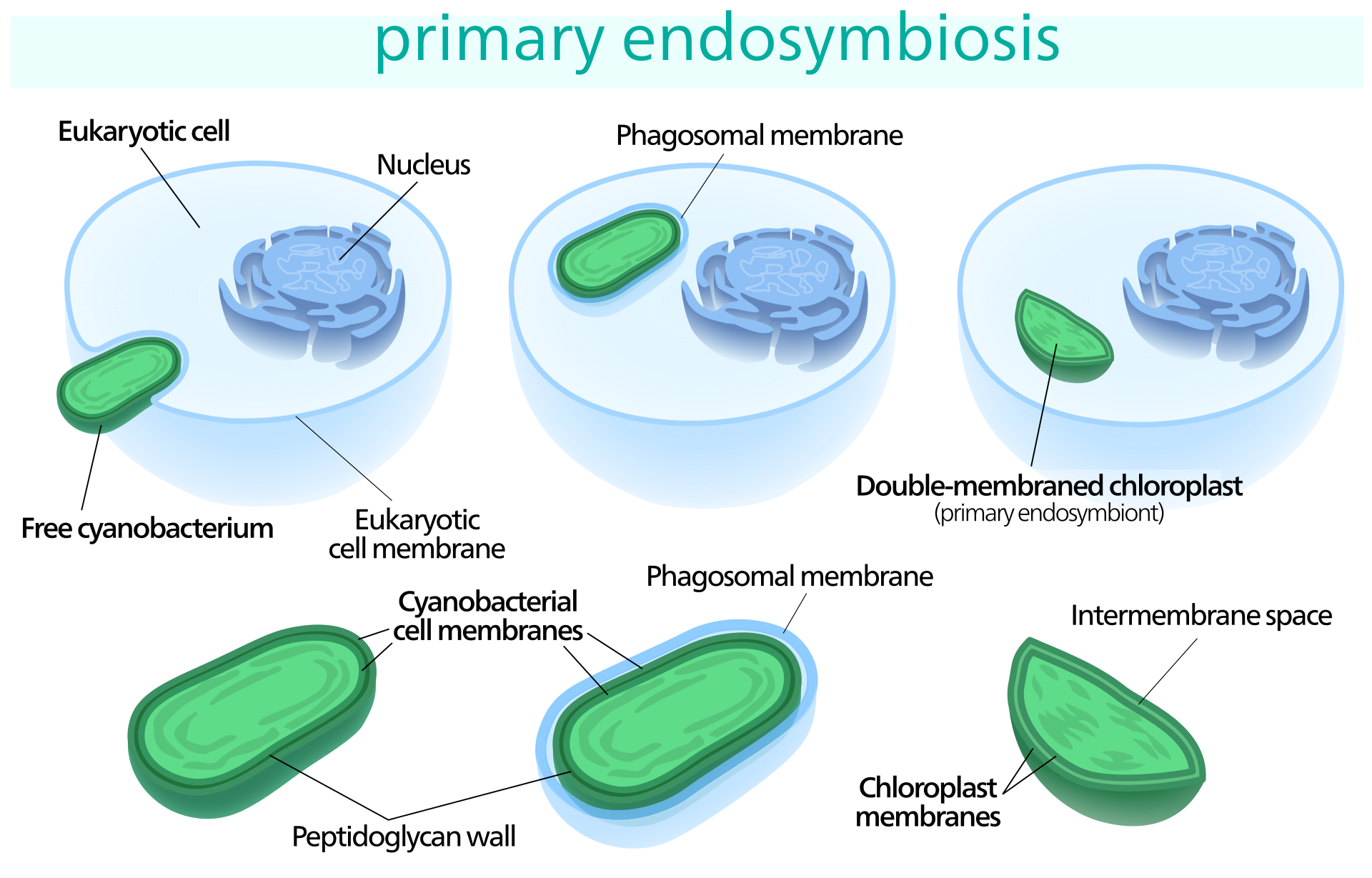2.4.3: Photosynthetic "Protists"
- Page ID
- 31926
Photosynthetic lineages can be found across the phylogenetic tree of protists. Most of the groups are unrelated to each other, as each major lineage acquired its chloroplast (and therefore the ability to photosynthesize) from different endosymbiotic events. For example, red and green algae belong to the same lineage (Archaeplastida). A red algal ancestor engulfed a cyanobacterial ancestor, leading to the first chloroplasts. These were inherited vertically--through reproduction and over evolutionary time--by the lineages of green algae. However, brown algae and diatoms inherited their chloroplasts from a secondary endosymbiotic event where their heterotrophic ancestor (something like an oomycete) engulfed a red alga. This is a horizontal transmission of chloroplasts between lineages, where genes (and here an organelle!) move between organisms through the environment, not through reproduction.
Endosymbiosis


The horizontal transmission of chloroplasts between lineages via endosymbiosis resulted in several unrelated groups of photosynthetic protists. The lineages covered in this section are:
- Dinoflagellates (secondary endosymbiosis)
- Brown algae and diatoms (secondary endosymbiosis)
- Red and green algae (primary endosymbiosis)
Attribution
Content by Maria Morrow, CC-BY-NC


